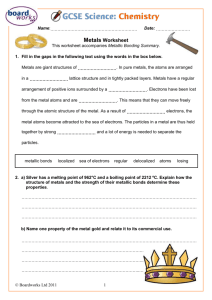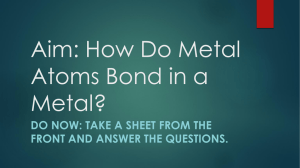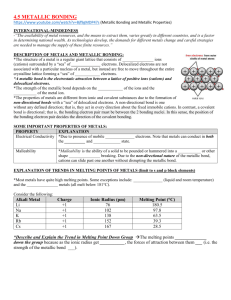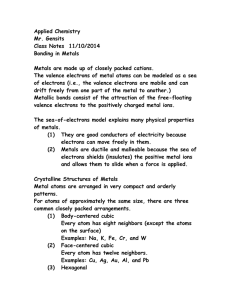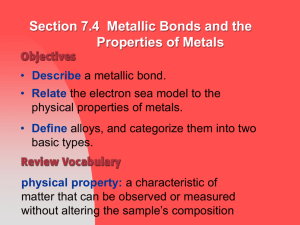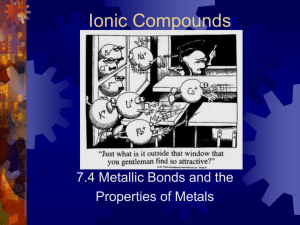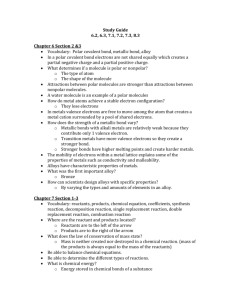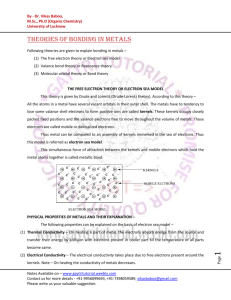7.4 Guided Notes- Master Copy
advertisement
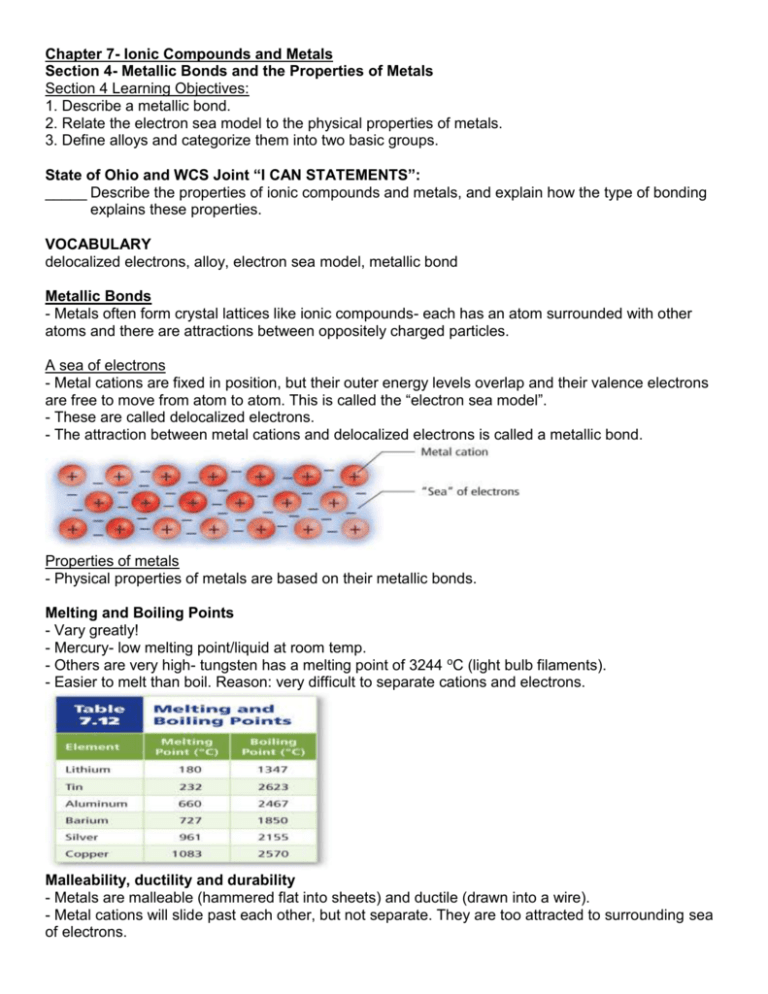
Chapter 7- Ionic Compounds and Metals Section 4- Metallic Bonds and the Properties of Metals Section 4 Learning Objectives: 1. Describe a metallic bond. 2. Relate the electron sea model to the physical properties of metals. 3. Define alloys and categorize them into two basic groups. State of Ohio and WCS Joint “I CAN STATEMENTS”: _____ Describe the properties of ionic compounds and metals, and explain how the type of bonding explains these properties. VOCABULARY delocalized electrons, alloy, electron sea model, metallic bond Metallic Bonds - Metals often form crystal lattices like ionic compounds- each has an atom surrounded with other atoms and there are attractions between oppositely charged particles. A sea of electrons - Metal cations are fixed in position, but their outer energy levels overlap and their valence electrons are free to move from atom to atom. This is called the “electron sea model”. - These are called delocalized electrons. - The attraction between metal cations and delocalized electrons is called a metallic bond. Properties of metals - Physical properties of metals are based on their metallic bonds. Melting and Boiling Points - Vary greatly! - Mercury- low melting point/liquid at room temp. - Others are very high- tungsten has a melting point of 3244 oC (light bulb filaments). - Easier to melt than boil. Reason: very difficult to separate cations and electrons. Malleability, ductility and durability - Metals are malleable (hammered flat into sheets) and ductile (drawn into a wire). - Metal cations will slide past each other, but not separate. They are too attracted to surrounding sea of electrons. Fig. 7.12 Thermal conductivity and electrical conductivity - The mobile electrons easily pass thermal energy through the metal. - They also quickly pass on electric current because they are not fixed in position. - These same electrons also absorb and emit energy from photons, producing luster. Hardness and strength - The more delocalized electrons a metal contains, the harder and stronger it becomes. - Transition metals often contain s and d electrons (very close to s sublevel). Alkali metals only contain 1 or 2 s electrons and are generally softer. Metal Alloys - An alloy is a mixture of different elements into a metal creating new metallic crystals and thus new/different metallic bonds. Properties of Alloys - Alloy properties differ from the elements they contain. Ex. Steel is iron with other elements mixed in. It retains some properties of iron, but the other elements add strength and durability. Substitutional Alloys - Substitutional alloys occur when atoms of the original metal are replaced by other metals of similar atomic size. Ex. sterling silver Interstitial Alloys - Interstitial alloys occur when small holes (interstices) in a metallic crystal are filled with smaller atoms. Ex. carbon steel

